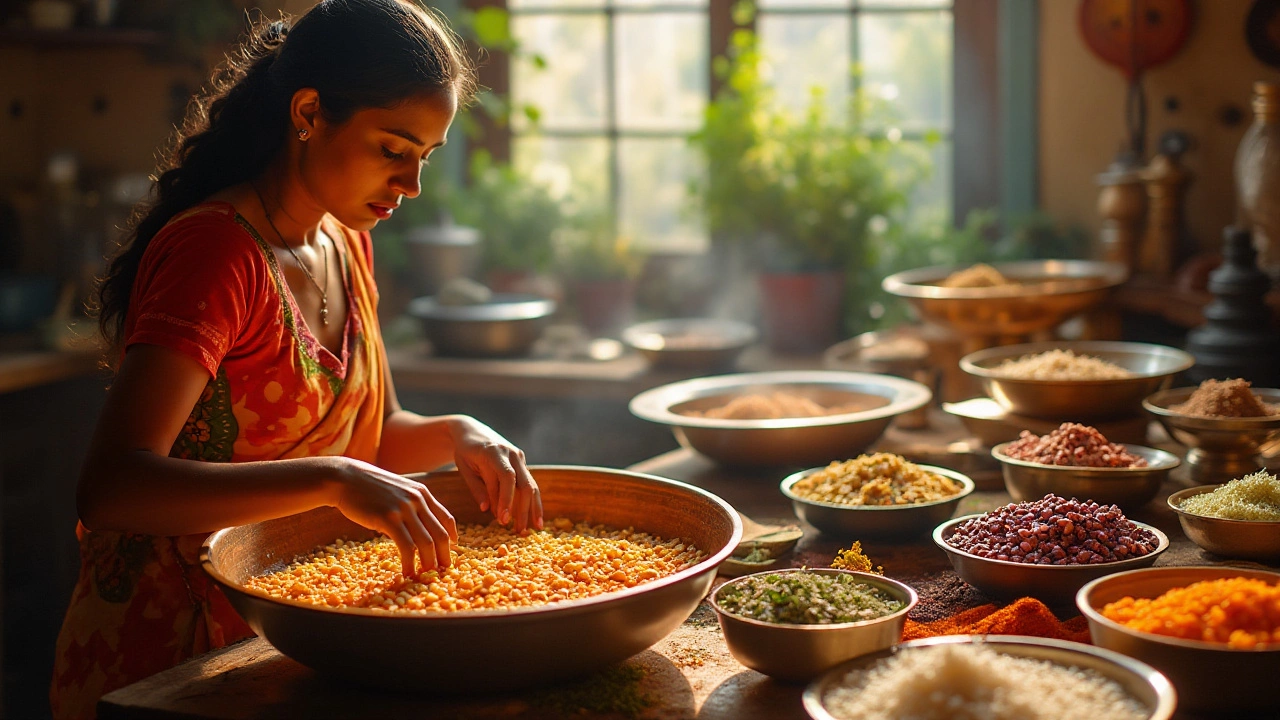Pulses – Indian Kitchen Essentials
When working with Pulses, edible seeds of legume plants that are a staple across India. Also known as legumes, they provide plant‑based protein and fiber, making them a go‑to for hearty meals. Dal is a type of pulse that’s turned into a thick, comforting stew, while Lentils are the small, quick‑cooking cousins often used in soups and salads. Together they form the backbone of Indian cooking, delivering nutrition and flavor in every spoonful.
Why pulses matter for health and taste
First, pulses are a powerhouse of protein. One cup of cooked dal can pack 15‑18 grams of protein, rivaling many animal sources and helping vegetarians hit their daily goals. They also carry complex carbs that release energy slowly, keeping blood sugar stable. Second, the high fiber content aids digestion and supports gut health – a benefit that becomes even stronger when you soak pulses before cooking. Soaking reduces antinutrients like phytic acid, shortens cooking time, and improves texture, which is why many Indian cooks swear by a few hours of pre‑soak. Third, pulses absorb spices effortlessly; whether you’re simmering them with turmeric, cumin, or mustard seeds, they become flavor sponges that turn simple dishes into aromatic feasts. This property links pulses directly to the rich spice palette of Indian cuisine, where each region adds its own twist.
Beyond nutrition, pulses are incredibly versatile. You can blend soaked lentils into batter for dosa, grind chickpeas into gram flour for pakoras, or mash kidney beans for a hearty chana masala. The cooking method influences the final dish: pressure cooking preserves nutrients and speeds up the process, while slow simmering allows flavors to meld and helps achieve that signature silky texture in dal. Knowing when to use each technique saves time and enhances taste. For example, a quick soak and pressure‑cook works great for everyday meals, whereas a long, slow boil is ideal for festive biryanis where pulses add body without turning mushy. Understanding these nuances turns everyday cooking into a confident, enjoyable experience.
Our collection below dives deep into all these aspects. You’ll find data‑driven breakdowns of dal nutrition, step‑by‑step soaking guides, and practical tips for boosting protein in vegetarian meals. Whether you’re a beginner looking for the basics or an experienced cook fine‑tuning texture, the articles ahead give you the facts and tricks you need to master pulses in the Indian kitchen.

The Impact of Skipping Soaking on Pulses and Dal Recipes
Skipping the soaking step when preparing pulses might seem like a time-saver, but it can have significant effects on texture, nutrition, and cook time. Soaking helps soften pulses, making them easier to cook and digest, while also reducing anti-nutrients like phytic acid. Without soaking, pulses might not cook evenly and could retain anti-nutrients that hinder absorption of essential minerals. Learn how to make the best choice for your dal recipes and ensure maximum flavor and nutrition.